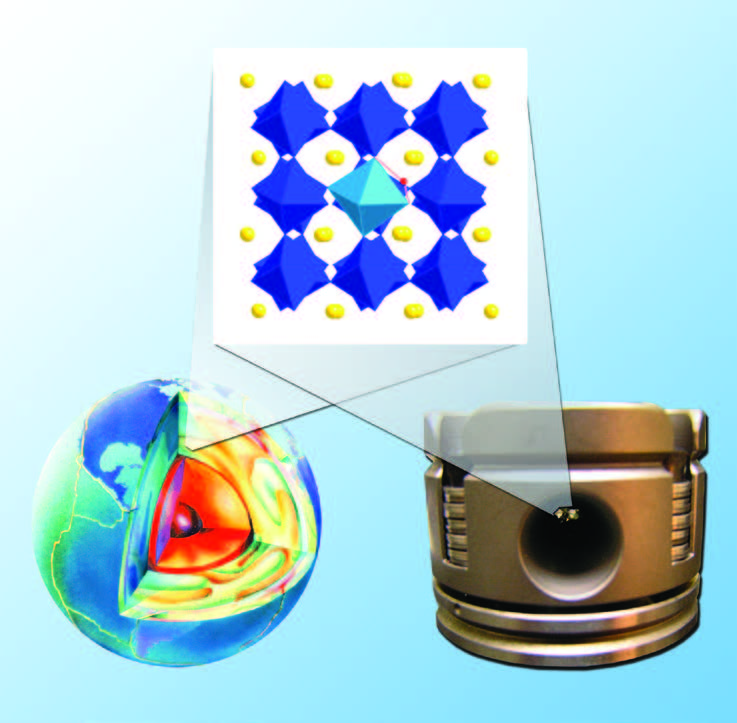above: Crystal structure of a perovskitestructured magnesium and iron silicate (with one hydrogen atom in red), which makes up about 80 percent of the deep mantle.
School children learn that nearly three-quarters of the Earth’s surface is covered with water, in the form of oceans, ice, rivers and lakes. However, even our brightest scientists know little about the distribution of water beneath the planet’s surface or even how much total water the planet contains.
“The Earth’s solid, silicate mantle has the potential to host as much as ten times the water we see on the Earth’s surface,” said Wendy Panero, Ph.D., assistant professor of earth sciences at The Ohio State University. “Water dissolved in the silicate mantle has dramatic effects on the physical properties and behavior of the planet, such as influencing the long-term shifting and shaping of the surface and interior, decreasing melting temperatures and slowing the speed of earthquake waves.”
Evidence suggests that the main mineral of the lower mantle is considerably drier than its shallower counterparts, implying that a water filter may exist 440-660 kilometers beneath the surface. Alternatively, water may exist in the lower mantle, but only in accessory minerals. This hypothesis has important implications on how we interpret present-day sea level rise and the origin and evolution of the planet.
To test her central hypotheses and answer related questions, Panero is leveraging the computational power of the IBM Glenn Cluster at the Ohio Supercomputer Center, paired with state-of-the-art, high-pressure experiments. She performs ab-initio calculations and molecular dynamics simulations to investigate deep-water storage and its effects deep within the Earth’s interior.
--
Project lead: Wendy R. Panero, The Ohio State University
Research title: Computational mineral physics: Water storage and cycling in the Earth’s interior
Funding source: National Science Foundation
